An Overview of My Teaching Philosophy
In my creative writing and composition classes, I practice outcomes-based teaching. I believe that a well-scaffold lesson plan with imaginative and compelling supporting activities and exercises conducted in a multi-modal, dialectic and inclusive classroom best serves a student developing their critical thinking and communication skills. In support of this basic tenet, whose practice enhances a student’s ability to both exploit and mitigate exigencies by way of creative and rhetorical flexibility and an increased effectiveness of the language and discourse they introduce into situations, I approach teaching as an invitation to relationship: with the course material, the instructor and their fellow classmates, and with the larger world around them. As such, I see my task as creating a space for students to encounter, at both a normative and empirical level, fundamental questions of power, justice, identity and equality in a collaborative and respectful group setting that is actively discovering and practicing alternative (better!) ways to view reality, human nature, and the uses of language.
Grades, like all standards, are a response to desired results. As such, I stress personal progress and attention to one’s process toward defined goals. When a student can identify, describe, and name the what, how, and why something in their thinking and writing was done or not done, it helps them be active participants in the holistic assessment of their work. Further, it’s my experience with continuing practitioners of creative writing and rhetoric that this kind of sustained and close attention to one’s manner of reading, writing and communicating uncovers habits and cognitive rhetorics which, if understood or adjusted, can greatly improve the quality of their work. What’s more, I firmly believe we become better writers from writing and from talking about writing with other writers. That’s why my students regularly workshop and practice the art of peer review. I find that it has many social, psychological and educational benefits. Amongst them is that it precedes perhaps the most important aspect of the writing process: revision. I believe attentive revision strengthens one’s connection to the unique elements of their selves, community and audience by inviting a more comprehensive inquiry into their varied perspectives. In other words, it enhances a student’s empathy, and can change their approach to situations. This new way of thinking and feeling allows students to negotiate and perceive new points of departure, from where they can create more useful and compelling pieces of creative writing, rhetoric or multi-modal communique. Thus an attuned attention to process and revision (as in, a re-envisioning) can lead to a more comprehensive and nuanced understanding of not only the actual, but to a clearer vision of the possible.
And although both creative writing and rhetoric are disciplines with their own invaluable traditions, theories and principles, it’s through the force of the imagination via experimentation and the question-creating process where previously unknown possibilities of reality, human nature and language are presented. This is perhaps where a student’s real learning occurs: as a direct temporal experience of the connectedness of things and people. Oftentimes, this occurs through their apparent contradictions and conflicts — binaries that language has created. From this knowledge of temporal relationships and the values and perspectives that different techniques, styles and literacies offer, a clarity on how a piece of creative writing or real-life situation can be improved upon follows: by the effective use of language and discourse. It’s from these pressures of reality and other’s imaginations — and one’s unique responses to their amalgamations — that create life’s conventions, opportunities and challenges. From these instances and their processing, one’s purpose and its direction comes to be better defined. Thus for me, to inspire and facilitate a student discovering new ways of looking and seeing as they navigate and create experience, and helping them learn how to identify and effectively discover and communicate their purpose, direction, thoughts and feelings to a variety of audiences in most any situation, is by far the best part of not only participating in higher education’s discourse and praxis, but of being a contributing member of a progressive and empathetic society.

Sample Blog Posts
… in response to compositional and pedagogical literature.
“A measure defines precisely; a gallon, a dollar, a page. But what about that which cannot be quantified? About all we can say about it is that it is either abundant, adequate, or not enough. But sometimes we can’t even say that. Once meaning is removed, when something is neither inferior or superior, having unburdened ourselves from judgements, comparisons, and romanticizing – the mediating functions that perceive good, bad, right and wrong in actual experience – then what is left? I think what remains is trust…..”
“If one were to examine those which can be called the most advanced compositions of music and painting, comparing them to either lesser pieces from their own era or to those in subsequent periods, it would not be inaccurate to say that the intervals between the music's notes and the space between the painting's things have gotten bigger - and more important. More important not just because it allows further discovery through an interrogation of the ideas that the notes and things create, but, from a deeper interrogation of the contextual space between them, a neutrally-charged space that can also increase overall coherency and understanding of the non-neutral components of corporeality. Here, using Fleckenstein's work on coherence and identity praxis and Kopelson's research on performative neutrality….”
Sample Lesson Plans
Teaching Resources








